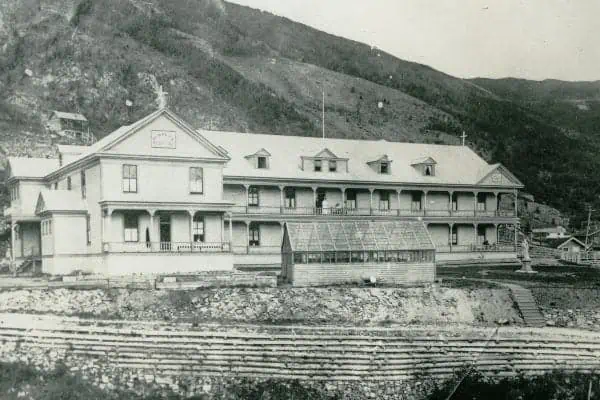Quick! Off the top of your head, how many world-famous geologists can you name?
None? We can fix that. There is at least one you should know more about, and of course he has a Yukon connection.
Joseph Burr Tyrrell arrived in Dawson City in 1898. The man who became known as the “Dean of Mining” and the “Conqueror of the Canadian North” already had enough adventures and achievements to fill several lifetimes before he arrived, but he had little cash to his name.
The lure of the Gold Rush was too much for even this notable geologist to ignore.
Tyrrell’s legendary career got off to a poor start. Born on November 1, 1858, in Weston, Ontario, he came down with scarlet fever as a child and was left with a hearing impairment for the rest of his life.
He was in poor health for most of his early years, but worked through a law degree at the University of Toronto.
J.B. Tyrrell, 1902 in his office in Dawson City PHOTO: Family photograph collection located at Thomas Fisher Rare Book Library, University of Toronto, MS. Coll. 26 Tyrrell (Joseph Burr) Papers
Then, his continued poor health led to a marvellous stroke of luck for Canadian science when his doctor told him that it would be in his best interest to work outdoors.
Following his doctor’s orders, Tyrrell took a job with the Geological Survey of Canada (GSC) in 1883, at the age of 25.
What followed was a terrific string of events.
On Tyrrell’s first major expedition, he tagged along with George Mercer Dawson on a survey of a large chunk of western Alberta, including the Crowsnest and Kicking Horse passes.
He collected plants, flowers and fossils while journeying through unmapped wilderness with the other great rock star geologist of the era.
His first major solo expedition was the following year, also in Alberta, further east between the Bow and Saskatchewan Rivers. It was on this journey that Tyrrell made the discovery that would make his name famous forever.
The story goes that Tyrrell’s discovery of dinosaur bones was entirely an accident. The man didn’t have much of an interest in palaeontology.
While he was exploring the Red Deer River Valley (and finding massive coal deposits while he was at it) he discovered the skull of a meat-eating dinosaur staring out of the hillside at him. He described it in his field notes as “the leering skull.”
This leering skull was shipped back to Ottawa and given only a cursory examination for some time. Twenty one years later, in 1905, his discovery was identified as a new species of dinosaur and given the name Albertosaurus.
Tyrrell worked for the GSC for another 14 years after his big discovery and went on major surveying expeditions all over northern and western Canada, and excursions into northern Manitoba and the Northwest Territories—all of them taking place either by canoe or on foot.
J.B. Tyrrell, 1894, in Inuit costume PHOTO: Family photograph collection located at Thomas Fisher Rare Book Library, University of Toronto, MS. Coll. 26 Tyrrell (Joseph Burr) Papers
Working with the GSC earned Tyrrell a degree of fame, but one thing it did not earn him was a substantial amount of cash.
After 15 years with the GSC he was still earning the same salary that he’d started with at about $1,800/year. In the meantime, he’d grown into a giant in his field, not to mentioning beginning a family. Something had to give.
The Gold Rush provided the perfect opportunity to get out. In 1898 Tyrrell was sent up to the Klondike by the GSC to report on the gold that had been discovered there. Upon seeing the amounts of wealth that people were pulling out of the earth, Tyrrell resigned his post and went into business for himself.
With his unique geological knowledge, Tyrrell believed that he had a huge advantage over other fortune-seekers making their way north at that time. Rather than staking a claim and trying to strike it rich, Tyrrell set up shop as a mining consultant, operating out of an office on Harper Street in Dawson.
After several years of successfully helping prosectors looking for their big payday and making a tidy profit for himself, Tyrrell opted to leave Dawson in 1906, after the Gold Rush had blown through.
Tyrrell’s home during his time in Dawson still stands on 8th Avenue.
For Tyrrell, the Klondike was just the start of his gold mining days. He went on to manage a series of profitable mines in northern Ontario, amassing a fortune to equal his fame.
Apparently unable to quietly retire, Tyrrell spent his final years experimenting with new breeds of apples in his orchards just outside of Toronto, and editing the journals of explorer David Thompson. He died in 1957 at the age of 98.




